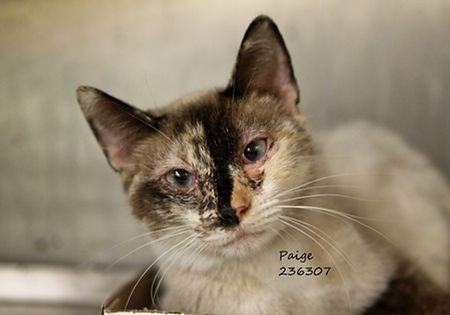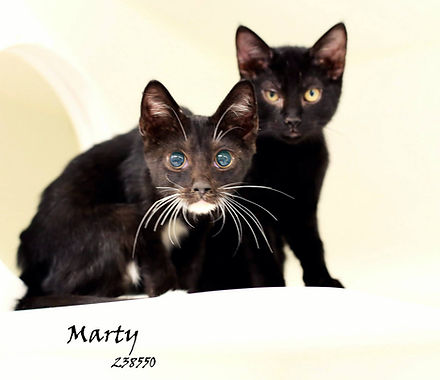Dangerous Wild Animals Regulations
Dangerous Wild Animals Regulations
Dangerous Wild Animals Regulations
Fostering Pets
Montgomery County Animal Services
8535 Hwy 242, Conroe, Texas 77385
936-442-7738
Fosters are desperately needed for the following types of cats and kittens.
Momma cats with nursing litters
In the spring we often see soon-to-be mother cats or mother cats with nursing litters arrive at the shelter. It is essential we place these mothers and babies into foster homes as soon as possible to avoid the risk of both mother and kittens contracting upper respiratory infections (URI) which are deadly to the kittens and sometimes the mother herself.
Fostering nursing litters can require:
-
A quiet location for mother and babies with privacy
-
Food/water and litter available to mother at all times
-
A nursing box preferably inside a pop-up cat/dog kennel
-
Attention to detail (weight tracking of infants)
-
The ability to transport your cat family to the shelter vet as needed for health check up and vaccinations
You may also find yourself in a situation where you will need to provide supplemental at-home medical care. (If you are unfamiliar with some of the treatment your foster(s) may require a more seasoned volunteer can also help guide you.)
-
Knowledge of how to syringe and tube feed infants (if needed)
-
Knowledge of how to care for an adult cat who develops a URI
-
Knowledge of how to provide sub-q fluids (if needed)
-
The ability to prepare for worst. Deaths do happen, even with best efforts

Kittens under age and/or underweight
Kittens are brought to the shelter this time of year in all stages of infancy. From newborns, to a few week old bottle baby, to older kittens already weaned. No kitten thrives at the shelter, they all are highly susceptible to URIs and these will kill them. It is with extreme urgency that when a kitten comes into the shelter, it is adopted or placed in foster immediately. Once in foster the kitten can receive the needed vaccinations to keep it healthy.
Fostering of kittens can require: (depending on age)
-
Being able to devote feeding time for bottle babies
-
Newborn- 1 week = Every 2-3 hours
-
2 weeks – 3 weeks = Every 4-6 hours
-
3 weeks – weaned = Every 6-8 hours
-
-
A safe, quiet, private, warm environment: keeping the kittens warm is the single most important task for both mommy cat and humans. Warming bed pads and Snuggle Safe microwaveable heating disks are available from most pet supply stores and through pet supply catalogs. If kittens are not warm, they will not eat, and they will quickly sicken and die. The nest should be located in the warmest, least drafty place possible. A bathroom often is the best choice.
-
Some fosters use automatic shut-off human heating pads on the lowest heat level or microwaveable heating disks.
-
Nursing/whelping box for young babies to keep them contained
-
Syringes or kitten baby bottles for feeding those not eating solids
-
Kitchen scale to record weight gain
-
Nebulizer and nebulizer chamber
-
Ability to handle making them void (go potty) through manipulation
-
Canned food – blender – for transitioning
-
Litter box for older kittens
-
Knowledge of how to syringe feed/tube feed kittens
-
Knowledge of how to treat URIs
-
Knowledge of how to provide sub-q fluids
-
Preparing for worst: deaths do happen, even with best efforts

Sick cats
The majority of the sickness seen in shelters is URI’s (Upper Respiratory Infections). These can cause the cat to stop eating, dehydrate and can turn into a life threatening situation very fast if not treated and in a foster home to provide supportive care. Most URI’s run their course in about seven to eleven days with proper medications and supportive care, much like the human’s common cold, and the cat recovers. Unfortunately this is not always the case and in some situations the cat continues to become progressively worse, does not respond to treatment and the humane decision to euthanize is the only option.
Fostering a URI sick cat can require:
-
The ability to medicate a cat using both liquid- and pill-form medications
-
Nebulizer chamber and nebulizer
-
Syringe for feeding and providing liquid to non eating/drinking animals
-
Knowledge of how to sub-q dehydrated animal
-
Time involvement to assure animal is getting proper amount of nutrients
-
Acceptance that even with best of efforts, death can occur
Depression also is prevalent at shelters, while not a disease itself, it often leads to a lower immune system, lack of will to eat, drink, or do life sustaining things among animals. This can lead to increased URIs and other health issues. This is most common found among owner surrender animals.

Injured cats
Injuries do happen before animals reach the shelter. The most common among cats are abscesses and limb injuries. Injured animals already have compromised immune systems due to the stress from injuries and are highly susceptible to illness.
Fostering a injured cat can require:
-
A safe, secure and quiet place for the wounded animal to recover
-
Ability to treat the injury, i.e., have a strong stomach at times
-
Ability to take time to work with rehab of injured limbs
-
The ability to transport your foster to and from regular vet visits

Aged cats
The shelter sees many old seniors who are in their end years of life. These cats are difficult to adopt out and yet still have so much love and life in them at present they deserve a place to be loved and cared for.
Fostering an aged cat can require:
-
More effort in getting the cat adopted
-
Acceptance that this animal is old, how much time left is unknown
-
Acceptance that ailments or illness might occur which come from age

Cats with special needs
Deaf, blind, birth defects or old injuries
At times the shelter sees animals brought in who have been born with or have disabilities that require special care.
Fostering a cat with special needs can require:
-
A willingness to learn as much as possible about your foster's special circumstance
-
Interviewing potential adopters to assess whether or not they can handle the special care your foster requires

Things you may need to do when fostering young or sick cats:
These are likely the most important
Syringe Feeding
Administering Subcutaneous Fluids
Safely Bottle Feeding Kittens
Safely Syringe Feeding Kittens
Kitten Potty Time
Subcutaneous Fluids for Kittens
For additional instructional videos and information you can click here to visit the "Kitten Lady Website".





